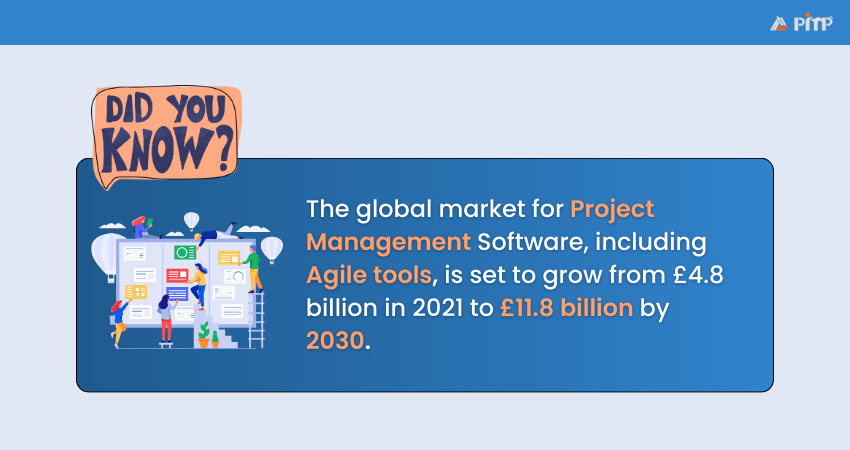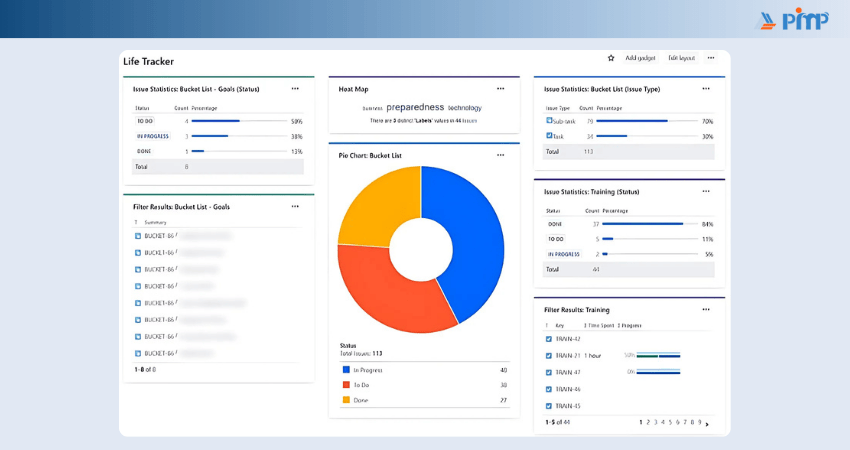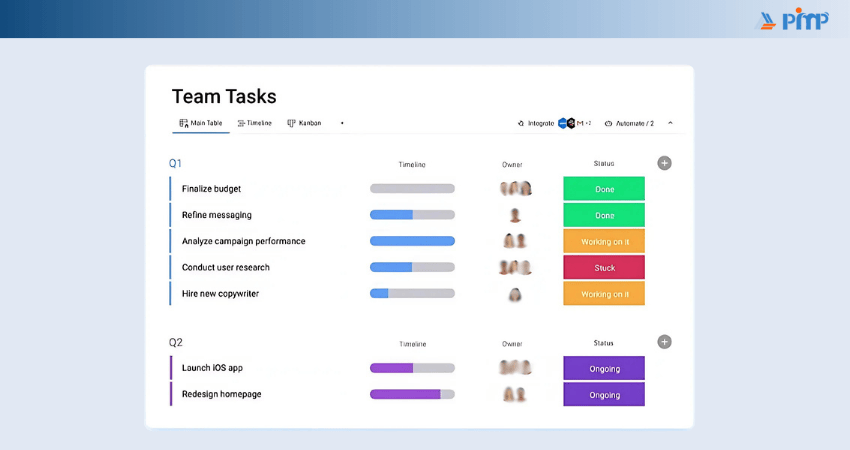







 10 Sep 2024
10 Sep 2024



Have you ever felt like your team is constantly busy but still falling behind? Maybe tasks keep slipping through the cracks, sprint planning feels like a chore, or collaboration across departments lacks clarity. Without the right systems in place, even the most experienced teams can lose momentum. That’s where Agile Project Management Tools come in to guide workflows, track progress, and improve transparency.
These tools are smarter, more customizable, and more essential than ever. In this blog, we’ve shortlisted the 11 best Agile Project Management Tools every team should know to keep projects on track and moving.
Table of Contents
1) What is an Agile Project Management Tool?
2) Top 11 Tools for Agile Project Management
a) Businessmap (formerly Kanbanize)
b) Jira
c) Zoom
d) Wrike
e) Asana
f) Teamwork
g) Monday.com
h) Digital.ai (VersionOne)
i) Confluence
j) Kissflow
2) Conclusion
Agile Project Management Tools are digital platforms that help teams manage work using Agile methodologies like Scrum, Kanban, or Scaled Agile Framework (SAFe). These tools are essential for organizing sprints, visualizing workflows, tracking tasks, and enhancing team collaboration.

At their core, these platforms offer visual boards, timelines, prioritized backlogs, and performance reports that make it easier to break work into manageable chunks. Agile teams use them to adapt plans in real time, assign tasks efficiently, monitor progress, and drive continuous improvement.
Key Features of These Tools Often Include:
1) Visual boards and swimlanes for workflow planning
2) Sprint and backlog management
3) Automation to reduce repetitive tasks
4) Integration with CI/CD, Git repositories, or communication tools
5) Reports and analytics to track team velocity and project progress
Here are 11 highly recommended Agile Project Management Tools in 2025, each selected for their unique strengths and ability to support Agile principles.
Businessmap is an enterprise-ready Agile platform rooted in the Kanban methodology, designed to align strategy with execution.
a) Customizable Kanban boards for visual workflow management
b) OKR alignment to link strategy with day-to-day work
c) Real-time analytics such as lead time and throughput
d) Portfolio and dependency management for scaling Agile
Businessmap is ideal for teams and enterprises that want transparency across multiple projects and portfolios. It helps break down work into manageable chunks while ensuring alignment with business objectives.
Jira is one of the most widely used Agile Project Management Tools, tailored for Scrum, Kanban, and hybrid workflows.

a) Sprint planning, backlog grooming, and story tracking
b) Visual Scrum and Kanban boards
c) Powerful reporting and dashboards (burndown, velocity, etc.)
d) Seamless integration with developer tools and CI/CD pipelines
Jira’s flexibility and deep Agile feature set make it a go-to choice for software development and cross-functional teams looking for precise tracking and reporting.
Zoom is a communication platform that supports Agile ceremonies for remote and distributed teams.
a) Video conferencing for standups, sprint reviews, and retrospectives
b) Screen sharing and annotation for live collaboration
c) Recording to capture discussions for later review
d) Whiteboarding for brainstorming and workflow mapping
While not a Project Management Tool, Zoom ensures Agile teams maintain real-time communication, which is vital for transparency, quick decision-making, and collaboration.
Wrike is a flexible work management tool with strong Agile capabilities for sprint and project tracking.
a) Kanban boards and Gantt charts
b) Custom workflows and automation rules
c) Agile reports and workload tracking
d) Integration with code repositories and communication tools
Wrike is excellent for teams that need both Agile and traditional project tracking, offering adaptability for various industries.
Asana blends task management and Agile planning into an intuitive, easy-to-use platform.
a) Kanban-style boards and timelines
b) Sprint templates and backlog tracking
c) Automation for task assignments and due dates
d) Custom dashboards for progress monitoring
Asana is perfect for teams seeking simplicity without losing visibility into Agile processes.
Boost productivity across teams. Get started with our Asana Training today!
Teamwork combines Agile planning with client collaboration and time tracking.
a) Kanban boards and sprint planning
b) Time tracking for Agile projects
c) Task dependencies and milestones
d) Client-facing portals for transparency
Teamwork is especially effective for service-oriented teams that balance Agile workflows with client reporting needs.
Monday.com offers visual project boards and custom workflows adaptable to Agile methods.

a) Drag-and-drop Kanban boards and timelines
b) Custom automations for repetitive tasks
c) Agile templates for sprint tracking
d) Dashboard overviews for project health
It’s a no-code, highly customizable platform, making it easy for teams to quickly set up Agile workflows.
Digital.ai is built for large-scale Agile implementations, including SAFe.
a) Portfolio and program-level planning
b) Backlog and release management
c) Dependency tracking and analytics
d) Integration with DevOps pipelines
Ideal for enterprises managing multiple Agile teams and complex initiatives at scale.
Confluence is a collaboration and documentation platform that supports Agile transparency.
a) Templates for retrospectives and sprint planning
b) Knowledge base for product and process documentation
c) Integration with Jira for traceability
d) Real-time editing and comments
It ensures Agile teams can store, share, and collaborate on key project information in one place.
Kissflow is a workflow automation platform with Agile-friendly features.
a) Customizable task boards and swimlanes
b) Automation for repetitive Agile tasks
c) Role-based permissions for team management
d) Progress tracking with visual dashboards
Great for teams seeking lightweight Agile workflows and automation without complex setup.
Zoho Projects supports Agile teams with Scrum and Kanban tools inside a broader Project Management suite.
a) Sprint planning and backlog tracking
b) Kanban boards for visual task management
c) Velocity charts and burndown reports
d) Integration with other Zoho apps
It’s a cost-effective solution for teams that want Agile features alongside wider Project Management capabilities.
Streamline projects with ease. Join our hands-on Trello Training now!
Agile Project Management Tools are essential across industries, not just in tech. Whether you are managing clients or scaling teams, the right tool can enhance delivery, boost collaboration, and improve transparency. Select a tool that fits your workflow, trial a few options, and prioritize team adoption. The best Agile tool supports ongoing improvement, keeping your team flexible, aligned, and consistently productive.
Boost your project confidence - learn to use powerful tools through our expert-led Project Management Tools Courses - Sign up now!






© Copyright 2025. All rights reserved. Contact: PMP® TRAINING ACADEMY.


